|
Solution
Introduction:
Our Solution is sincere, friendly, energetic and beneficial.
Following three approaches have been utilized.
- Reducing the number of symbols, representing Arabic alphabet, to only one single symbol per letter. And, customising each symbol(or letter) to be distinct, discreet and dissimilar from all other symbols.
- Color Coding the letters and diacritics according to their functions in recitation. Now, the 'colors' indicate all the functions of letters and diacritics, while the readers don't learn, practice and judge them anymore.
- Adding auxiliary refinements, when composing each page and each line.
Before going into deep details, please scan through following two very essential factors.
We are far more comfortable, efficient and fast, when driving on
the roads and highways in North America, than when finding our way
or a direction in a less developed country or a continent.
It is because, the teams of persons supporting the roads and highways in North America, have worked hard and long, to ensure, that the drivers, themselves, don't have to make or inquire many navigational decisions. The teams developed these decisions for the drivers and have posted them on the roads, highways and their ramps.
It becomes further more thrilling and accurate, if our cars are guided by 'programmed maps' from within the car. When a program leaves lesser options with its user, the user is saved from making many mistakes.
If within an Arabic text, smaller is the number of options left with the readers, lesser will be the number of mistakes made by them. If we reduce the number of decisions, to be judged and taken by the readers, lesser will be the chances of mistakes being made by them. Consequently, their recitation would emerge more accurate, comfortable and fun.
This above mentioned clean and cool strategy has been followed to some extent in the
'Easy Recite Arabic' Printing System and to great details in 'C3 Arabic Text
Transliteration (Printing) System' as under:
- The System takes almost all decisions, at all locations, in the
Holy Text.
- The System incorporates all its decisions and displays and prints
them appropriately, leaving least chances with its readers, to make
judgements and mistakes.
- The System transforms an 'ordinary or standard Arabic text' into
a 'Transliterated Arabic text,' on which the readers run with accuracy
and speed, and relish recitation with pleasure and pride.
Creative Arabic to Arabic Transliteration:
Recitation:
One can recite a language, which one may not even know or understand
well.
- Arabic Recitation is reproducing, phonetically correct pronunciation
from a given text, not necessarily with comprehension or understanding
of the text.
- Arabic Recitation is the systematic and rhythmic rendering of
phonetics (called letters) under given controls (called diacritics).
Reading:One reads a text of a language, when one knows and understands the language well.
- Reading is with comprehension and understanding of the text, being read.
- Reading is relishing the comic, cartoons, jokes and such features of the text.
- Reading is enjoying the prose, poetry, literature etc. printed on paper / screen.
Transliteration:
Transliteration is adopted to facilitate an accurate pronunciation of a word, sentence or text, with greater ease and convenience, through a written representation, in the same language or in an other language.
Creative Use of Arabic to Arabic Transliteration:
Reciting Arabic from 'Transliterated Arabic text in Arabic' becomes real easy.
'C3 Arabic Text
Transliteration (Printing) System' has been developed using Arabic to Arabic transliteration, with creative thinking, color coding and utilizing modern technology.
In the end, the 'Easy Recite Arabic Printing System' and 'C3 Arabic Text
Transliteration (Printing) System' deliver a genuine Arabic script, as well as, the most comfortable, correct and colorful calligraphic Arabic to Arabic transliteration.
Single Case Arabic Font and its Samples:
'Single Case Arabic Font' or 'Single Shape Arabic Font' is
the 'Resultant Remedy' or 'Consequent Cure' fronting the 'Unresolved
Problems # 1-2' listed in another page named 'Present' of the
Web.
Thanks to the computers and modern technology, that Arabic text is now being displayed and printed, with just one shape or symbol per letter. And, that each and every symbol or shape is particularly distinct and discrete in design, cool and calligraphic in display and functional and more easy to be learnt, judged and used by all the readers.
Please get acquainted with following 30 Symbols of 'Single Case Arabic Font,' which compose and create all Arabic text, in 'Easy Recite Arabic' System.
Single Case Arabic Font Samples:
Color Coding; Technique and Results:
Let the 'Colors' and
not the reader, resolve the 'Classification'
of the letters.
Ignore 'Hollows,' Start
a Blend on Green and Normal
with Black letters! |

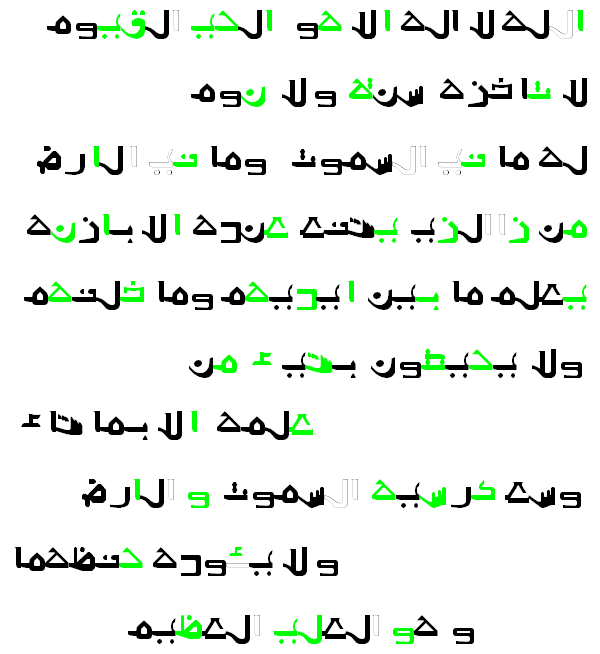
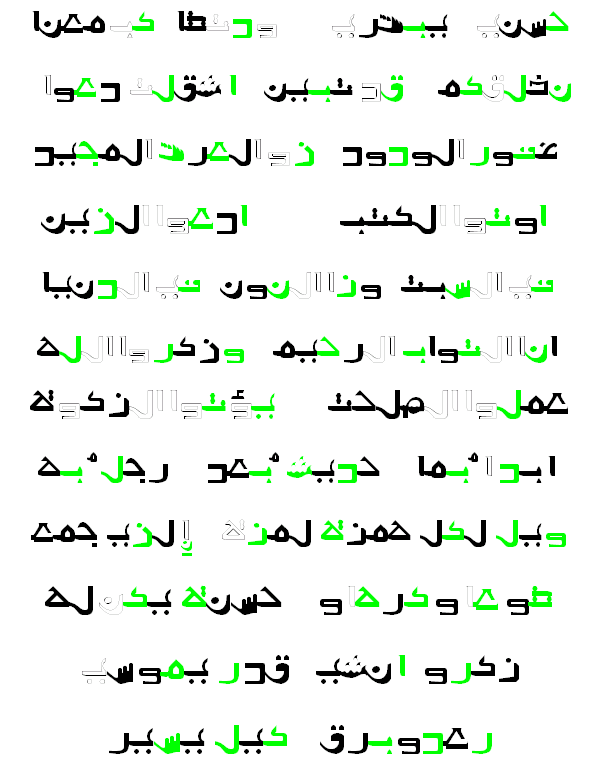
|
|
Enjoyed?
Ignore 'Hollows,' Start a Blend on Green
and Normal with Black letters! |
Let
the 'Colors' and not the reader, resolve the
'Classification' of diacritics.
Ignore 'Hollows,' Blend forward on Green
and Normal with Black diacritics! |

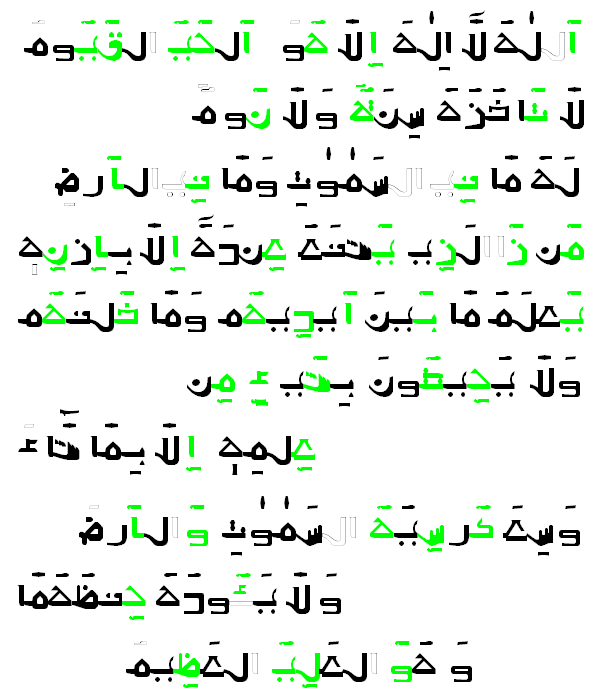
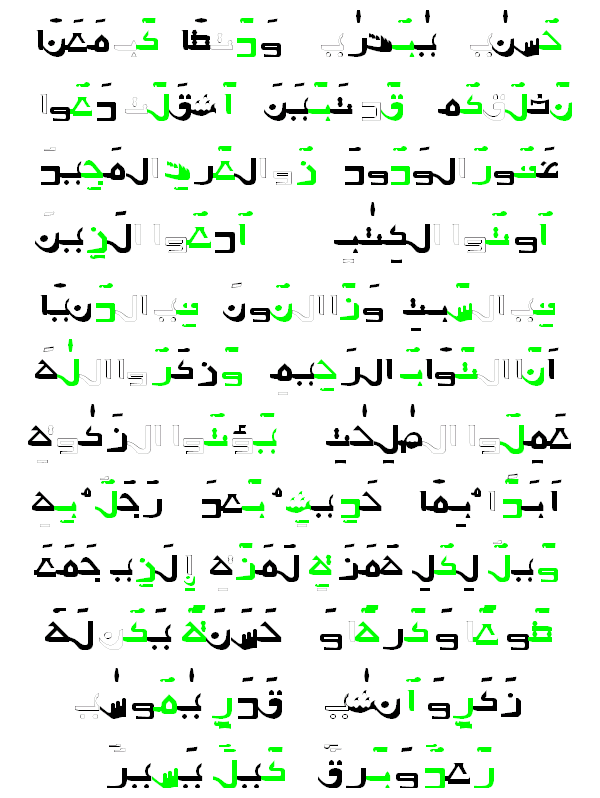
|
| Enjoyed?
Ignore 'Hollows,' Blend
forward on Green and
Normal with Black diacritics! |
|
Let
the readers not look for Jazm and Shadda, to
obey them in reverse! |

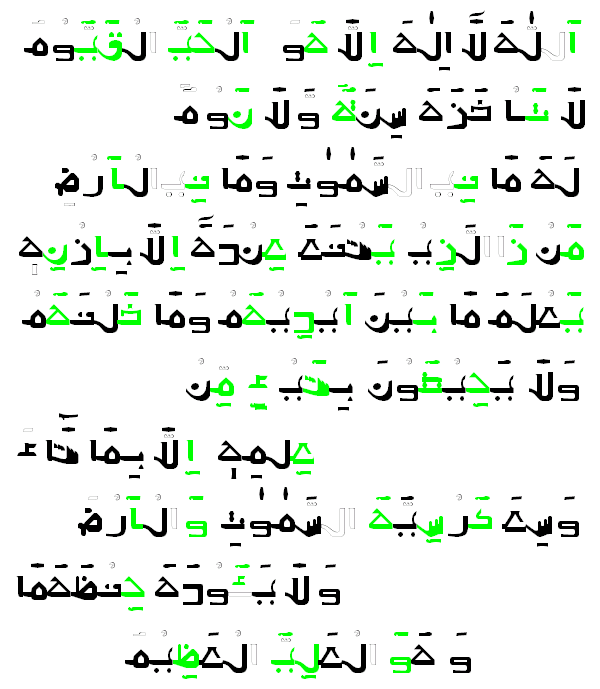
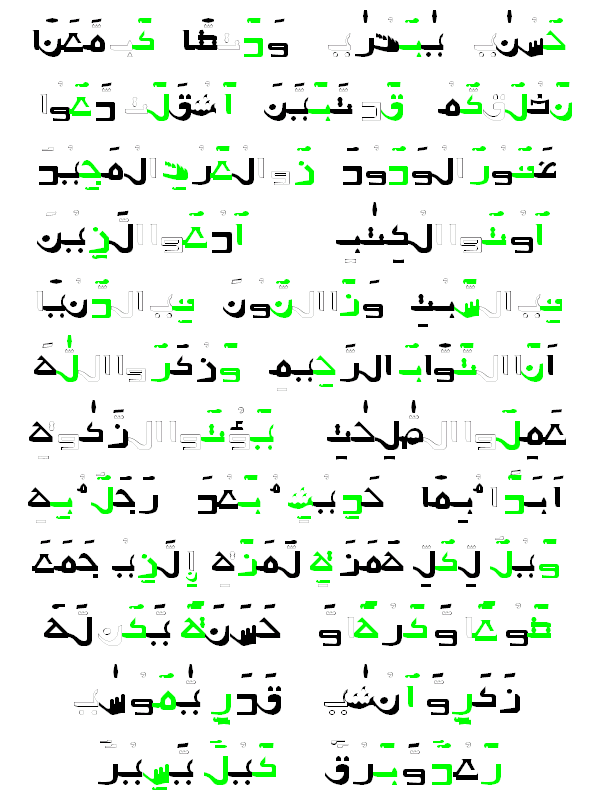
|
|
Enjoyed?
Freedom from obeying in reverse and looking
for Jazm and Shadda? |
|
Let
the closely connected words be underlined and
crowded together. |

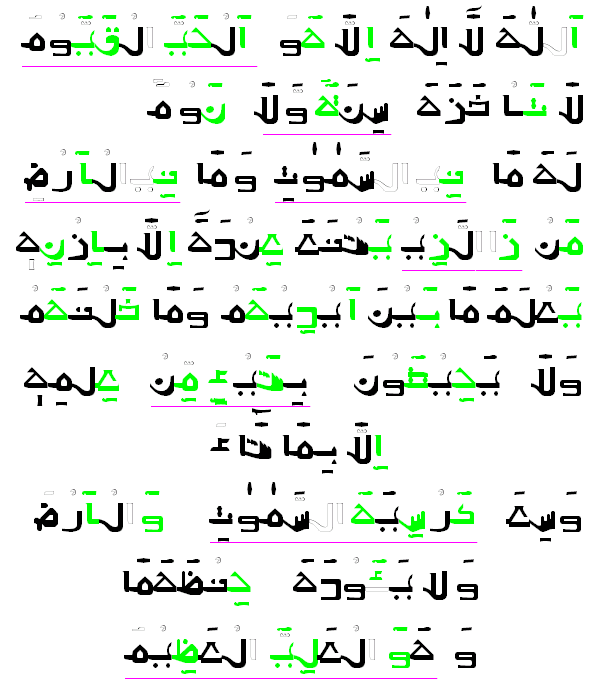
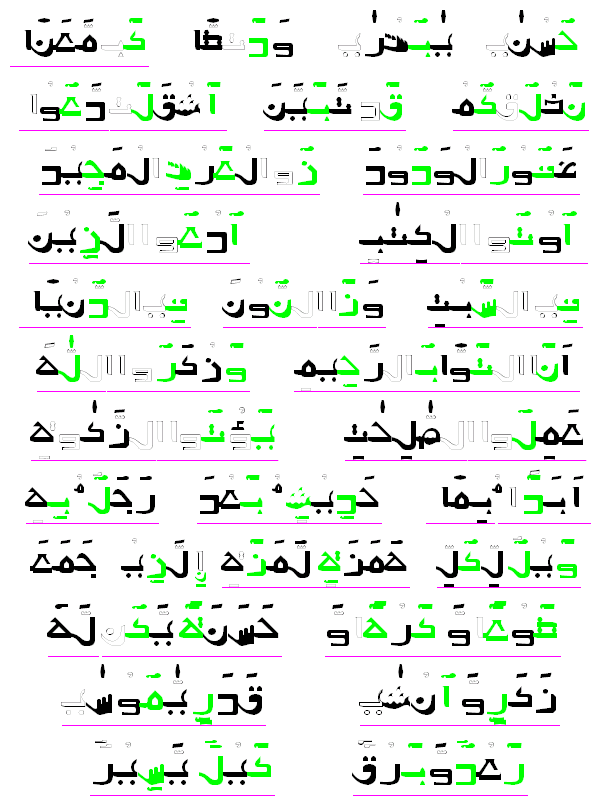
|
|
Enjoyed?
The acceleration provided by 'Underlining and Closing the
words?' |
New Free Fine Facilities and Rules:
- The Text is now printed with 'Single Case Arabic Font,' that uses only one Symbol per Arabic letter and not at all more than one shape per letter.
- All new Symbols are custom designed, distinct and no more confuse the readers.
- All letters are color coded and indicate their status during the recitation.
- All diacritics are color coded and indicate their purpose during the recitation.
- 'Jazm' and 'Shadda' are no longer learnt, looked for and obeyed, any more.
- The Prints 'red-underline' the words to be recited together, to push the readers faster.
- The prudent Prints avoid the need of 'Blending' two letters on two different lines.
- Last, but not the least, the Prints now operate without the old, complicated, confusing, Arabic based non international Punctuation Signs.
Request Feedback: Because of above mentioned facilities, all readers are expected to be more relaxed, accurate and thankful to God for these eight comforts. Kindly let us know 'your order of preference with in these eight facilities.' This will help us to serve you better.
Rules:
In case you are well familiar with all the contemporary Rules of Recitation on non System prints, then be advised that some of these rules continue to be relevant and applicable in C3 Arabic Text Transliteration System. However some other rules become obsolete and get replaced with following System rules:
- A green letter indicates that it is the first letter of a pair of two letters. It will blend or merge its affected sound with the next 'spoken' letter.
- A green Diacritic also signals that a pair starts from the associated green letter.
[You are aware that the second letter of a pair
carries either a Jazm or a Shadda.
The System continues to show a Jazm / Shadda on the second letter
of each pair.]
- A hollow letter is a 'non-spoken' letter. It produces no sound. It is to be ignored.
- A hollow diacritic is a 'non-effective' item and must be ignored.
- A partial hollow with a black or green diacritic: The (solid) black or (solid) green part of the diacritic will perform, while the hollow part is ignored.
- A black letter performs its role, as before, except as stated above.
- A black diacritic performs its role, as before, except as stated above.
- The 30 alphabatic symbols of 'Single Case Arabic Font,' are used to compose entire Arabic, instaed of about 110 conventional Arabic alphabatic symbols.
In case you are a beginner you will find all essential help under the Library on the Site.
Color Coded Transliterated Samples:
1. Samples from the Holy Quran:
2. Some Non Quran Text Samples:
3. Type-Setting with Disconnected Letters:
|
|